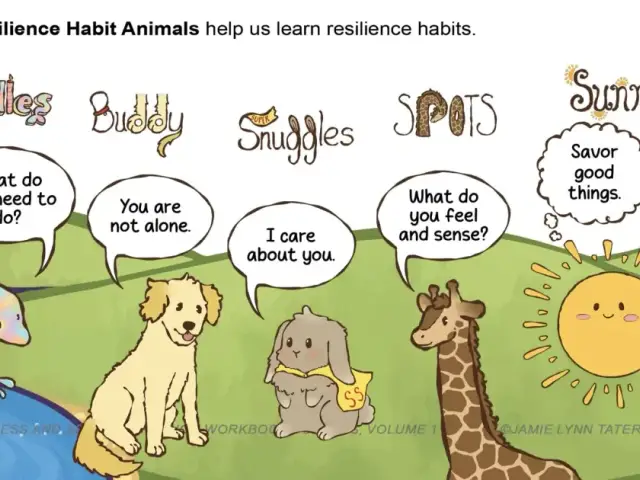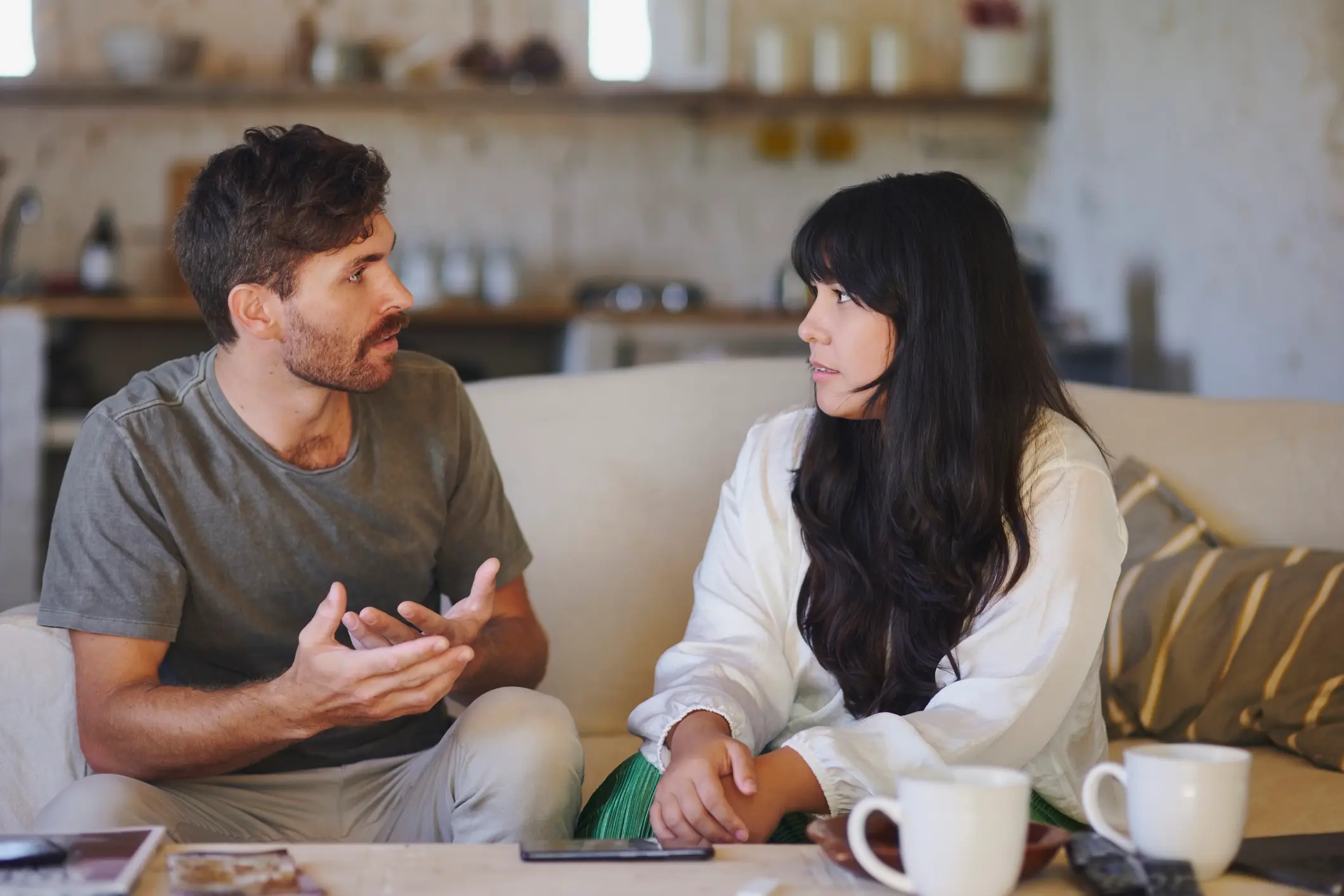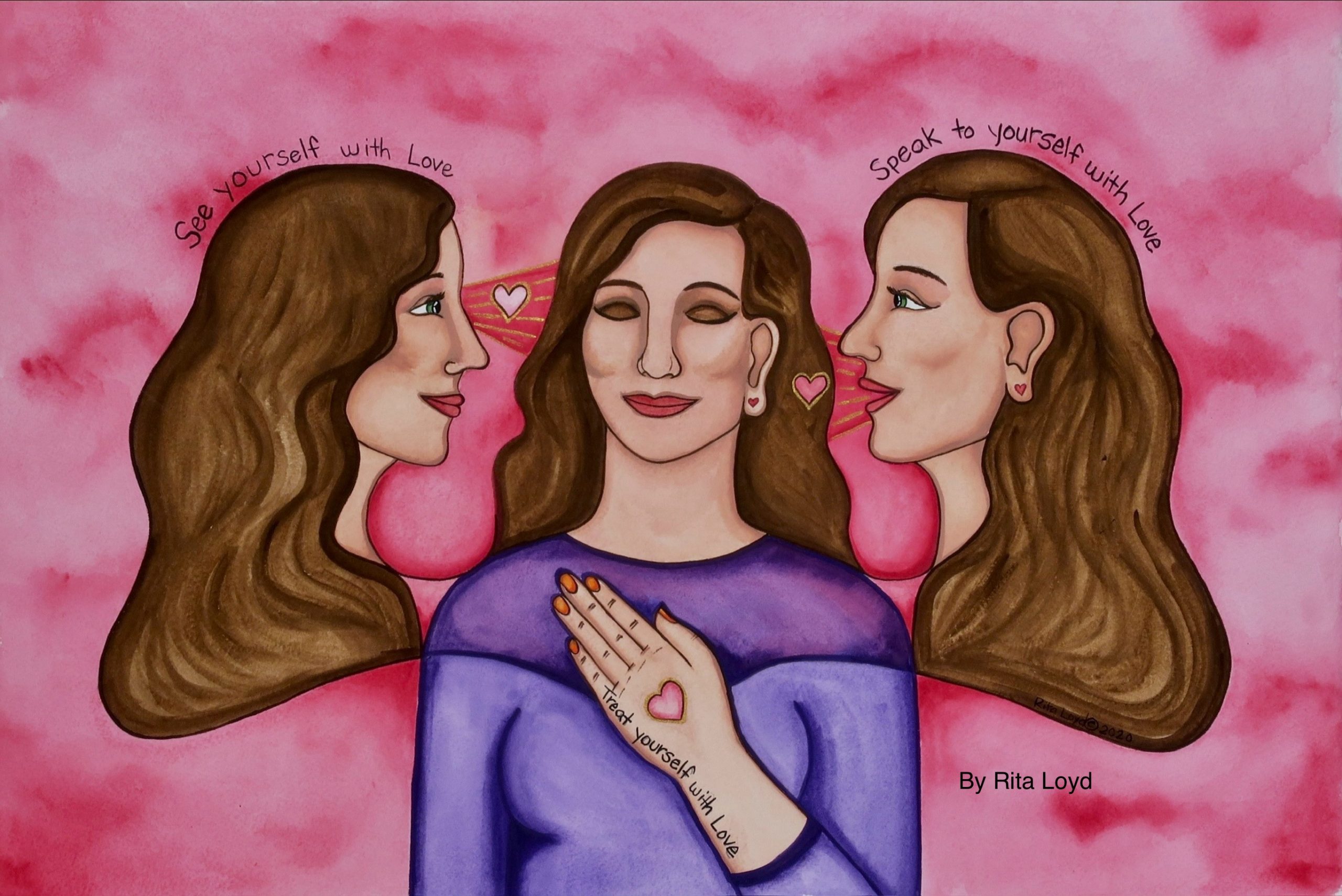What resources do you find helpful when you’re struggling? In the wake of the pandemic, a series of federal grants brought me into Milwaukee Public Schools to support children’s well-being and resilience. In one fourth-grade bilingual classroom, students were so engaged with our playful mindful Self-compassion practices that I returned the following year as a volunteer to continue our work. By 2025, we had taken things deeper—exploring five “resilience animal” habits to help students cope when things go wrong.
The resilience animals—a dolphin, a dog, a bunny, a giraffe, and a sun—come from the Self-compassion-workbook-for-kids/” title=””>Mindfulness and Self-compassion Workbook for Kids, which I wrote with the help of 12 children. They are also part of the research-based Mindfulness and Self-compassion for Children and Caregivers course and related teacher training programs I have created. The workbooks and programs are designed to teach kids (and caregivers) the essential skills of mindfulness and Self-compassion.
Mindfulness invites us to be present with our thoughts, feelings, and surroundings in a curious, non-judgmental way. And Self-compassion means we treat ourselves like a good friend when we are struggling. When kids learn to notice their feelings and respond with care, they can more easily handle life’s challenges and bounce back when life gets hard.
X
It’s delightful to witness how these animals make learning mindfulness and Self-compassion fun for both kids and their caregivers. (You can take the quiz yourself and discover your resilience animal!) Resilience habits take root in classrooms when teachers embrace them, and they take root in families when parents embrace them. Here are the five resilience habits and how you can work with children on them.

“Spotting” our feelings, thoughts, and sensations
“When I get stressed, I like to use mindfulness (Spots) like noticing my senses or how I feel.” —Ambika, age 12
Resilience begins with awareness, which is why the first resilience habit animal is Spots the giraffe. The giraffe’s spots can remind us to “spot” what is happening inside and around us, including our thoughts, feelings, body sensations, and five senses. We can also be mindful of our urges and actions.
One way to help children grow mindfulness is through modeling. We can mindfully name our feelings and draw attention to what we notice through our own senses. We can also scaffold children’s mindful awareness by asking them how they feel and helping them be curious about what they can see, hear, and sense.
For example, a parent waiting in a long line at a store could say to a child, “I noticed I’m feeling a little impatient and my shoulders are getting tight. How are you feeling?” The two might then decide to name things that they can see and hear, or play a mindful seeing game like Eye Spy together.
“Spotting” our thoughts, feelings, and five senses can help us stay present and balanced when difficult things happen. Research on mindfulness suggests that it can also be a catalyst for cultivating healthy habits.
Belonging to humanity
“When I’m stressed, I use Buddy. I remember that I’m not alone and most people go through the same things.” —Kamille, age 11
The second resilience habit is remembering that difficult moments are part of the human experience. In the field of Self-compassion, this habit is referred to as Self-compassion.org/wp-content/uploads/2020/09/Alasiri2019.pdf” title=””>common humanity. When we practice common humanity, we remember that it is natural to sometimes struggle and falter, and we feel connected in our shared humanity.
Common humanity contrasts with the resilience-depleting habit of telling ourselves that we “shouldn’t” be struggling. Whereas self-judgment tends to make us feel worse, remembering the universality of challenges boosts our ability to cope.
Buddy the dog is the resilience animal that reminds us it’s OK to be fully human and feel as we do. Just as a dog can be “man’s best friend,” so too can Buddy help us to remember that we are not alone. In a not-yet-published study of the Mindfulness and Self-compassion for Children and Caregivers program, many children share that they use the “Buddy habit” to soothe themselves when they struggle. Parents can help kids to internalize a sense of belonging by appropriately sharing their own struggles, as well as highlighting the shared experience of challenges in daily life.
Self-kindness—gentle and strong
“I feel like I have the Snuggles habit. When something goes wrong, I start thinking ‘It’s OK; I’m going to be good.’” —Denny, age 10
Self-kindness is a superpower, and perhaps that’s why Snuggles the bunny frequently dons a cape. Kindness can be tender and comfort us when things go wrong, and kindness can also take the form of Super Snuggles, encouraging us to reach for our dreams and rise to challenges.
Self-kindness is the third component of Self-compassion as defined by researcher Self-compassion.org/” title=””>Kristin Neff. Wrapping ourselves in a blanket of kindness as we go through challenges boosts our resilience and positive coping skills.
Happily, Self-compassion is a trainable skill. A simple Self-compassion practice is to ask ourselves during a moment of struggle how we would respond to a close friend with a similar challenge. We can then turn that kindness back to ourselves.
There are many strategies for helping children grow self-kindness, including speaking to them in a compassionate voice that they can internalize. There are also Mindful Self-compassion programs for Self-compassion.org/what-is-Self-compassion/%23the-mindful-Self-compassion-program” title=””>adults, teens, and Self-compassion-class/” title=””>children.
Taking kind actions
“I like to use the Doodles habit—I go for a run or I journal.” —Maya, age 14
Self-compassion Workbook for Kids” src=”https://ggsc.s3.us-west-2.amazonaws.com/assets/images/mindfulness___self-compassion_workbook_for_kids-1x_-_abcdef_-_a26c4878d68b6c47eb291eabb5cc8f4045faf08e.webp” srcset=”https://ggsc.s3.us-west-2.amazonaws.com/assets/images/mindfulness___self-compassion_workbook_for_kids-1x_-_abcdef_-_a26c4878d68b6c47eb291eabb5cc8f4045faf08e.webp 1x,
https://ggsc.s3.us-west-2.amazonaws.com/assets/images/mindfulness___self-compassion_workbook_for_kids-2x_-_abcdef_-_04793919fe3a27ffda953dc0febe050b28d9c4f4.webp 2x” sizes=”(min-width: 1041px) 1170px, 100vw”/>
Self-compassion-workbook-for-kids/” title=”Mindfulness and Self-compassion Workbook for Kids book page”>Mindfulness and Self-compassion Workbook for Kids, Volume 1: 40+ Fun Activities and Comics to Learn to Self-Regulate, Find Peace, and Be Kind to Yourself (Wholly Mindful)
Self-compassion can also take the form of kind actions. When things go wrong, Doodles the Dolphin asks us what we can do to support our own well-being. This sometimes involves turning toward our problems and actively trying to resolve them. Other times, kind actions might involve shifting our attention away from our problems, and focusing on a good book, the natural world, or spending time with a friend.
Helpful actions will look different for different people. Here are some favorites from kids who helped me create my workbooks: When stressed, Khalil likes to rest or move his body. Sofia finds comfort caring for her plants. Matteo feels better when he makes art or plays games, and Anjali calms herself with music. You can invite children to make a list of activities that are kind to their mind, body, and heart, and they can look back at their lists when they are struggling.
The litmus test for determining whether or not an action is kind is to ask ourselves if it will benefit us both now and later. Often the choice is not whether or not to feel discomfort, but rather what to do while we wait for the pain to pass.
Taking in the good
“When I’m upset, I like the Sunny habit. I think about something different and just play songs that make me happy. Sunny thinks about the good things.” —Nayeliz, age 10
When things go wrong, sometimes we just need to compassionately be with the pain. But over time, we also want to notice good things.
When I work with kids in schools on cloudy days, I sometimes invite them to look out the window and ask them, “Is there sun?” I receive a chorus of mixed responses, and then I remind them that the sun is there; it’s just hidden behind the clouds. There are always good things happening, even when life gets hard, which is why our last resilience habit is called Sunny the sun.
Our brains have a natural negativity bias, so we need to be intentional about helping our minds take in goodness. We can pause when we have an enjoyable moment throughout the day and take a few deep breaths as we bring our attention to our senses. This can help good things be more salient in our mind. We can also purposefully remember a handful of good things each day.
What would be helpful?
Which of the five resilience animals is your best match? Do you like to observe the situation like Spots the giraffe, or remind yourself you’re not alone like Buddy the dog? Is kindness your superpower like Snuggles the bunny, or do you take action like Doodles the dolphin? Or maybe you look for the good like Sunny?
The five resilience animal habits create a robust toolkit for coping with difficult things, and we can be intentional about building these skills. When it comes to learning the habits, the key is to grow them when all is well so that they are accessible when things go wrong. If I were going to add a sixth habit, it would be remembering to ask ourselves what we need during our moments of struggle.
This comic from volume 2 of the Self-compassion-workbook-for-kids/” title=””>Mindfulness and Self-compassion Workbook for Kids highlights the power of asking ourselves what we need when things go wrong:

When I’m stressed, I’m sometimes tempted to pick up my phone and scroll. But then I remember the resilience animals and ask myself: What would actually be helpful? During moments of struggle, we can turn to the five choices from the Resilience Animal Quiz. Do we need mindful awareness like Spots? Or a Buddy-style sense of connection? Perhaps we need kindness like Snuggles, or to take helpful action like Doodles. Or maybe we need Sunny to help us remember that good things are happening, too. One, two, or a collection of all the resilience animal habits might be helpful in the moment. The key is to pause during our moments of struggle and ask ourselves what we truly need.












